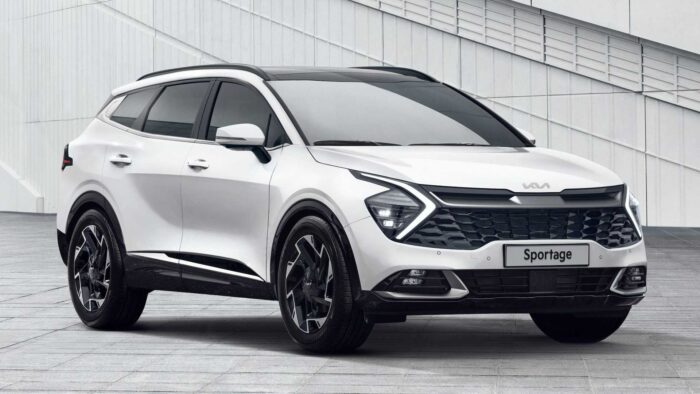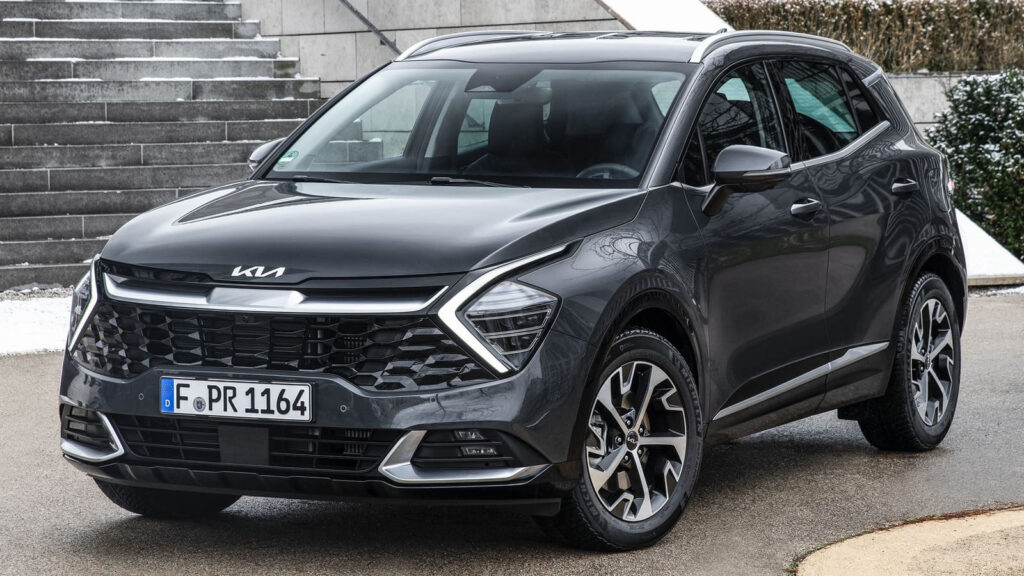Tire pressure is a crucial factor when it comes to safety, fuel efficiency, and overall performance of your vehicle. If you own a Kia Sportage, or even if you’re considering getting one, it’s essential to understand the recommended tire pressures for different generations, trim levels, and engines. In this guide, we’ll walk you through those details and even throw in a handy guide on how to reset that pesky low tire pressure light.
Why the Right Tire Pressure Matters
Before we get down to the nitty-gritty, let’s talk about why nailing the right tire pressure is more important than remembering your WiFi password.
- Safety First: Well-inflated tires keep your Sportage steady on the road, reducing the risk of accidents. No one wants their precious ride to slip and slide, right?
- Save Those $$: The right tire pressure can improve your fuel efficiency. Translation: More miles, fewer trips to the pump. Cha-ching!
- Prolong Tire Life: Imagine your tires as the unsung heroes of your Sportage. Correct pressure helps them wear evenly, meaning they’ll last longer.
- Smooth Operator: Optimal tire pressure gives you a smoother, more comfortable ride. Bumpy roads, you’ve met your match!
Recommended Tire Pressure for Different Generations of Kia Sportage
The Kia Sportage has seen several generations, and tire pressures vary depending on the year. Here’s a quick breakdown:
| Generation | Year | Recommended PSI (Front/Rear) |
|---|---|---|
| 1st Generation | 1993-2004 | 32/32 |
| 2nd Generation | 2004-2010 | 33/33 |
| 3rd Generation | 2010-2016 | 34/34 |
| 4th Generation | 2016-2022 | 35/35 |
| 5th Generation | 2021-Present | 35/35 |
These are general recommendations; always refer to your vehicle’s manual or the sticker inside the driver’s side door for specific details.

How Tire Pressure Differs by Trim Level and Engine
The tire pressure can also vary depending on the trim level and the engine of your Kia Sportage:
| Trim Level | Engine | Recommended PSI (Front/Rear) |
|---|---|---|
| LX | 2.4L 4-cylinder | 34/34 |
| EX | 2.0L Turbocharged 4-cylinder | 33/33 |
| SX Turbo | 2.0L Turbocharged 4-cylinder | 33/33 |
These are illustrative figures based on a subset of available trims and engines. Always refer to manufacturer guidelines.
Yearly Tire Pressure Recommendations
| Year of Production | Recommended Tire Pressure (Front) | Recommended Tire Pressure (Back) |
|---|---|---|
| 2010 | 32 PSI | 32 PSI |
| 2011 | 34 PSI | 34 PSI |
| 2012 | 33 PSI | 33 PSI |
| 2013 | 32 PSI | 32 PSI |
| 2014 | 35 PSI | 35 PSI |
| 2015 | 33 PSI | 33 PSI |
| 2016 | 34 PSI | 34 PSI |
| 2017 | 33 PSI | 33 PSI |
| 2018 | 34 PSI | 34 PSI |
| 2019 | 35 PSI | 35 PSI |
| 2020 | 33 PSI | 33 PSI |
| 2021 | 32 PSI | 32 PSI |
| 2022 | 34 PSI | 34 PSI |
| 2023 | 33 PSI | 33 PSI |
| 2024 | 33 PSI | 33 PSI |
Remember, these recommendations are approximate and may vary depending on factors like tire type, load, and driving conditions.
☀️ Summer vs. ❄️ Winter Tires: Which Ones Do You Need?
Just like how you choose between sunglasses and scarves based on the season, your tires need a seasonal wardrobe change too! Summer and winter tires have different personalities that match the weather they face.
🌞 Summer Tires: These tires are your go-to pals when the sun’s out and the roads are warm. They’re designed to provide excellent grip on dry and wet surfaces, offering optimal performance for those smooth summer cruises. Keep an eye on their tread depth as the heat can wear them down faster than you can devour an ice cream cone!
❄️ Winter Tires: When winter’s icy breath freezes the streets, it’s time to switch to winter tires. These champs have special rubber compounds that stay flexible in the cold, ensuring a solid grip on snowy and icy roads. It’s like giving your car a pair of snow boots to dance through the winter wonderland safely.
How to Reset the Low Tire Pressure Light
After inflating your tires to the correct PSI, you might still notice the low tire pressure light on your dashboard. Here’s how to reset it:
- Manual Reset Button: Some Kia Sportage models have a reset button located on the dashboard. Press and hold this button until the light turns off.
- Drive Around: After filling your tires, drive your Kia Sportage for a few minutes. The system will often recognize the change and turn off the light automatically.
- Check All Tires (Including the Spare): Sometimes the light might be due to the spare tire being low. Ensure all tires, including the spare, are at the correct PSI.
- Visit a Professional: If the light remains on, it might indicate a faulty sensor. It’s best to visit your local mechanic or Kia service center for assistance.
Benefits of Regularly Checking Your Tire Pressure
Monitoring and maintaining the proper tire pressure isn’t just a one-time thing. Consistently checking and ensuring they’re at the recommended PSI can provide several benefits:
- Reduced Wear and Tear: Properly inflated tires wear evenly, which can extend their lifespan.
- Optimized Performance: Whether it’s braking, acceleration, or handling, having your tires at the recommended pressure ensures peak performance.
- Enhanced Comfort: Overinflated tires can make for a bumpy ride, while underinflated ones may cause a draggy feeling. Properly inflated tires offer a balanced and comfortable ride.
Common Myths About Tire Pressure
There are numerous misconceptions regarding tire pressure. Let’s debunk some of the most common myths:
- Myth: “You should inflate tires to the maximum PSI listed on the sidewall.”
Truth: This number is the maximum pressure the tire can handle, not the recommended pressure for optimum performance. Always refer to your car’s manual or the sticker inside the driver’s door. - Myth: “Cold weather won’t affect my tire pressure.”
Truth: For every 10°F change in temperature, your tire’s PSI can change by about 1 PSI. Cold weather can cause a decrease in PSI, making it crucial to check tire pressure during seasonal changes. - Myth: “All tire pressure gauges give the same reading.”
Truth: There can be variances among different gauges. It’s always a good idea to use a reliable and preferably digital gauge for accuracy.
Tips for Checking Tire Pressure
- Consistent Timing: Check tire pressure when the tires are ‘cold,’ ideally in the morning or after the car has been stationary for a few hours. This provides the most accurate reading.
- Use a Quality Gauge: Invest in a good quality tire pressure gauge. Digital gauges tend to be more accurate than pencil-type gauges.
- Check Monthly: Tire pressure should be checked at least once a month and before long trips.
FAQs
Do I really need to adjust tire pressure based on the year of my Kia Sportage’s production? Absolutely! Different years might have variations in weight distribution, suspension, and tire size, affecting the ideal tire pressure. Following the recommended pressure helps maintain proper handling, fuel efficiency, and tire life.
Can I use the same tire pressure for both summer and winter tires? While you can use the same pressure for both types of tires, it’s advisable to adjust it based on the specific tire’s characteristics. Winter tires might require a slightly lower pressure for better traction on slippery surfaces.
Can I use nitrogen instead of regular air for my tires? Certainly! Nitrogen can help maintain tire pressure stability for a longer time, reducing the risk of pressure fluctuations due to temperature changes. It’s a great option for consistent performance.
How often should I check my tire pressure? Make it a monthly ritual! Regular pressure checks ensure your tires are at their prime, delivering optimal performance, improved fuel efficiency, and safer driving.
